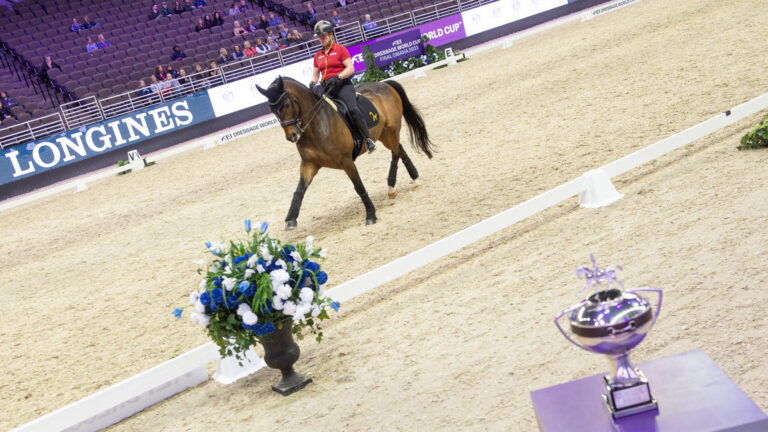Q: I am new to dressage and new to the idea of connection. Before coming to dressage, I worked with a hunter trainer who wanted her horses behind and afraid of the bit. When I left her, I left bits behind as well and have been trail riding bitless. I’ve found dressage and fallen in love, but I’m having issues with the idea of connection and when it should be happening. I understand it in the arena but what about out on the trail? Hills? Rivers? Should you always be “connected” to your horse’s mouth?
—Name withheld by request
A: I would first like to address the USDF Glossary definition for connection. It is a “state in which there is no blockage, break or slack in the circuit that joins horse and rider into a single, harmonious, elastic unit.”
When we think of connection, we must think of the whole horse and not just the mouth of the horse. Riding the horse’s hind legs through your seat into a contact, and then having that energy distributed back to the hind legs in a harmonious unit, is what I consider connection.

There is a degree of contact, which, in fact, must travel to the bit. The USDF definition of contact is, “the reins are so that they form a straight line, not a loop.” We can have contact without connection but we cannot have connection without contact. Let me say that contact is a means of controlling the horse. We teach horses to turn and stop or slow down through a degree of contact. The more advanced horses get in training, the more they start listening to subtle rein aids and react more to the rider’s seat.
Even with a bitless bridle, we have some kind of control through our contact. Instead of having control through the bit in the mouth of the horse, we have control through nose and poll pressure.
Of course, when working on dressage, the connection is our main goal. When working in the arena, we want to strive for this ultimate connection each time we ride. You asked if it’s necessary to ride with a connection when you are out and about on the trails, hills and rivers. After giving you the definitions of connection and contact, I think you were more or less asking if we need to ride on contact outside of the arena. Of course, it is not necessary. Horses need to be allowed to relax and enjoy the scenery as much as you do. I will say you should stay spiritually connected out and about on the trails. The amount of contact one uses is different for each horse.
I purposely ride with connection and contact when out working in the fields. This is a wonderful way for the horse to feel free but yet work all those muscles that need to stay in condition. This type of work is especially good for horses that are a little behind the leg (for instance, are not going forward and reaching for the bit) in the arena.
You mentioned rivers. If you are swimming your horse in any body of water, then I suggest that you hold on and grab his mane. Let the horse alone and don’t disturb his balance. If crossing a rocky area, I suggest taking a bit of contact, and if there are some slippery rocks underneath the water, give your horse a little upward half halt with the reins to gain his attention. This will also help to warn him that he should be cautious of his hoof placement.
Depending on the horse, his amount of training and his character, he will direct you about riding on contact or on a loose rein. If I would turn my competition horse totally free in unfamiliar territory, I wouldn’t be here answering your question. All horses have their own personality, and we must respect them for that. Happy trails to you—on contact or off.

Gigi Nutter is a USDF bronze, silver and gold medalist and dressage trainer through the FEI levels.











